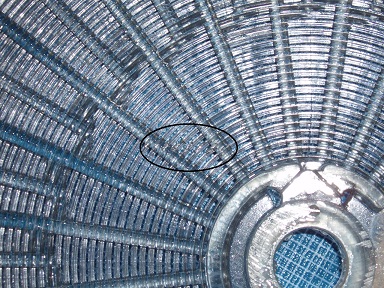Experiments in Eco-Processing
Blog 2018 January
January 10, 2018
Kale is very high in phenolic compounds one study sited 575 mg/100g, but a lot of these phenols get lost when cooked. My thoughts are that the phenols get transferred from the plant to the water when cooked? One of my very first tests, back in my See Weeds days, was developing with a combination of kale and grass, it worked beautifully! I got a very dense image but with a nice green hue to the film and that was even without a tinting step. I was warned that kale has other metals and minerals in it that make it more challenging to use as a developer than caffenol, weeds, or blueberries. This week was very challenging trying to find a good combination of the kale tea, with the washing soda, and vitamin C – each time I made many small modifications one at a time, in either the ingredient amounts, temperature, or agitation. Funny, the first test seemed to work the best.
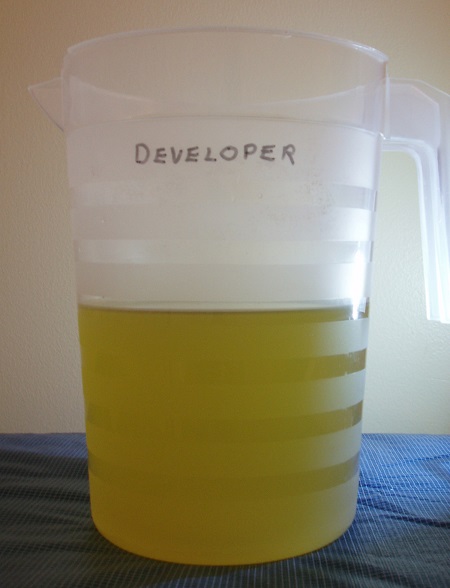
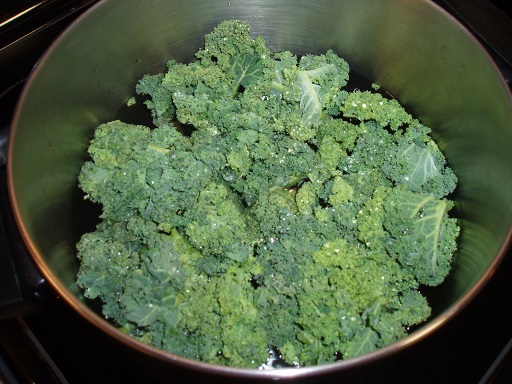
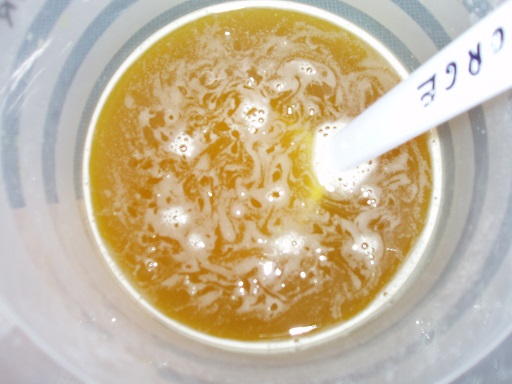
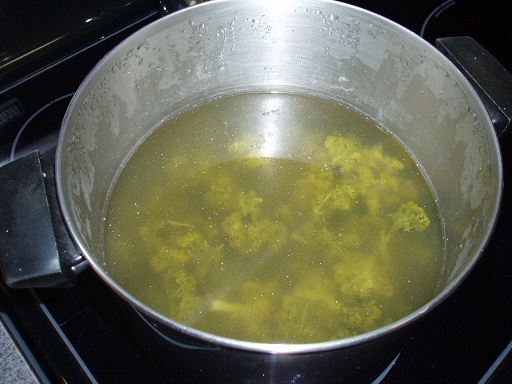
Kale Tests 1 - 5 with Caffenol
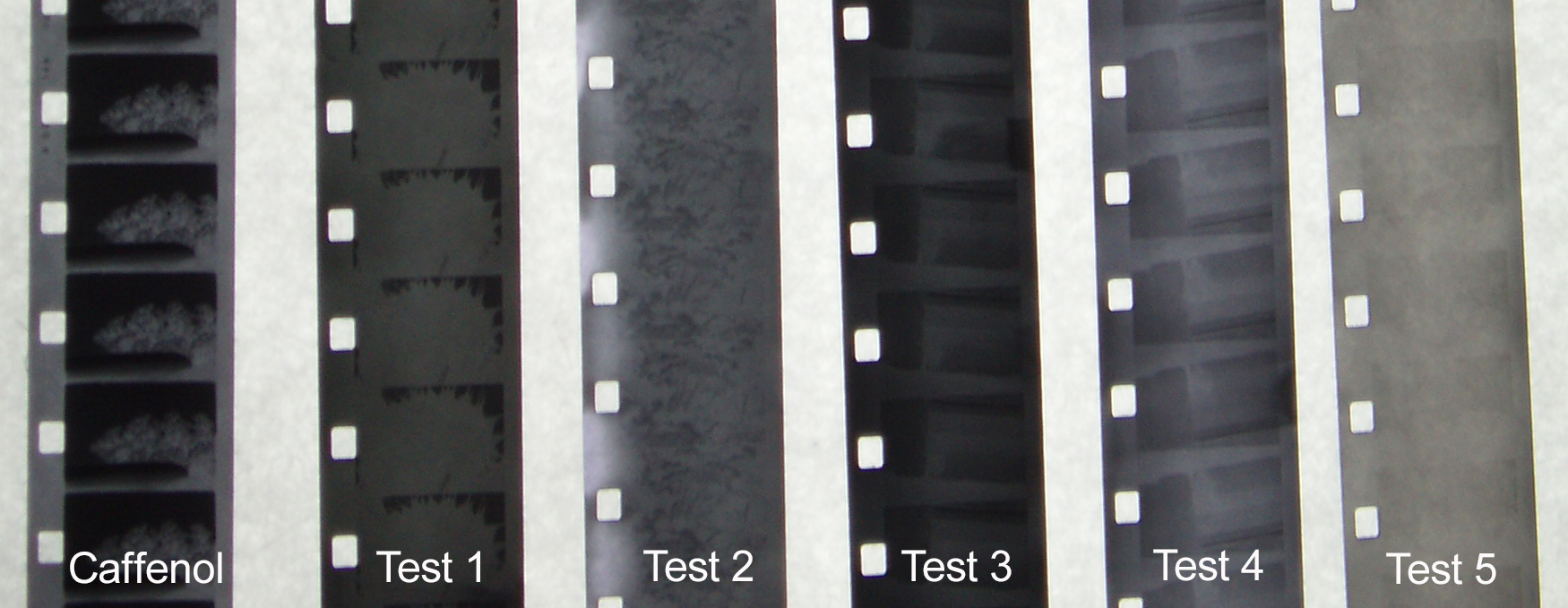
January 15, 2018
After determining what recipe offered the best results, I then developed half of a role of the kale footage with the kale developer and the standard eco-reversal bleach. This was the first time in a long while that I loaded the tank incorrectly, fortunately the film still turned out well.
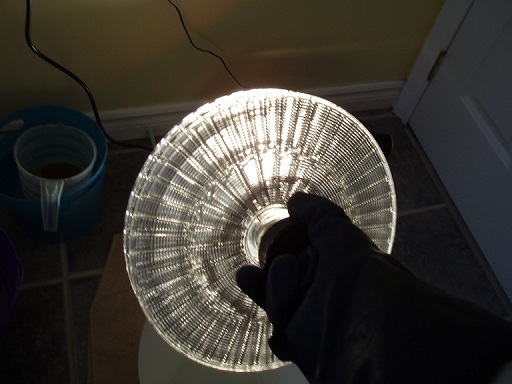
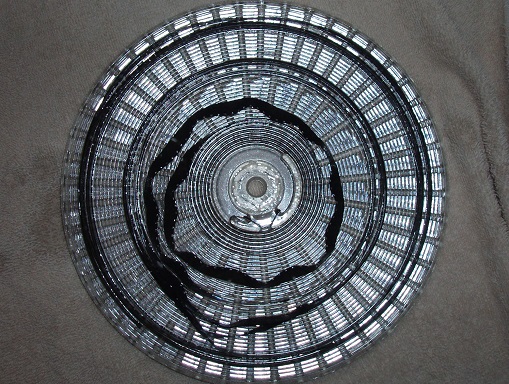
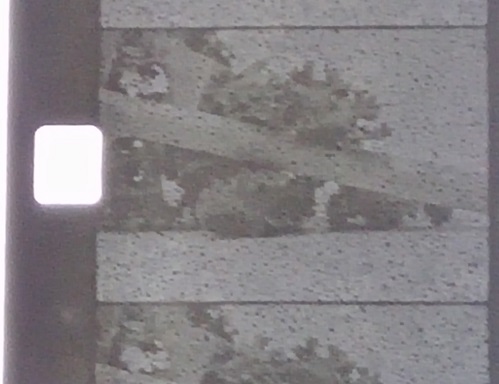
Besides getting a decent reversal, I also received this lovely surprise...blister bubbles!!
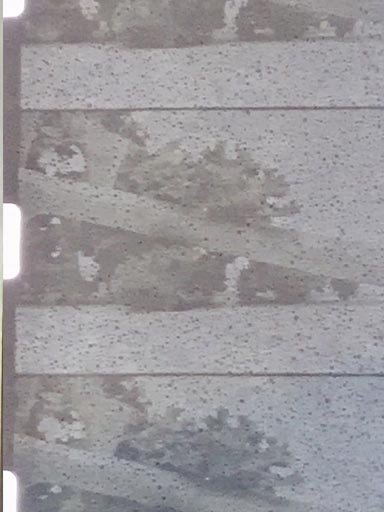
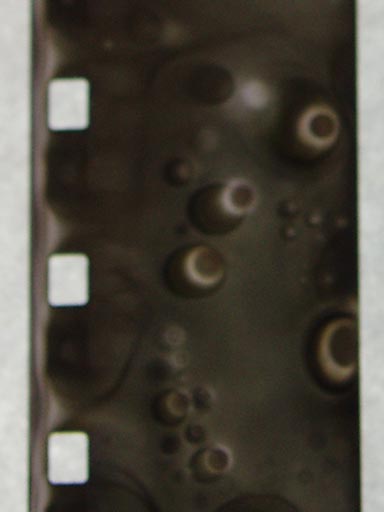
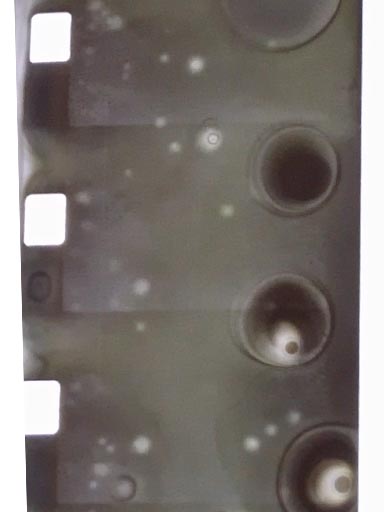
The flecks on the kale images were caused the eco-reversal bleach being unstable. I am going to work on altering the reversal recipe by adding more vinegar and less hydrogen peroxide. But why is the eco-reversal bleach unstable when used with the kale developer and not with the caffenol?
One of the great things about working with the eco-reversal process is that after you expose the film to light you don’t have to develop in the dark from this point forward. You can watch the second developer in action. Many of the reversal recipes that I researched said to keep the film in the second dev (developer) as long as the first. I found this not to be true - the second dev only takes half as long as the first, especially if you keep your developer warm. The best way is to keep an eye on it and when you see the image you want, do a quick water wash and then fix.
Some of the challenges in this process are keeping temperatures consistent. If the temperatures change too drastically the film will have reticulation effects, which are fun but not what I wanted. So, to keep the temperature consistent I have a few techniques I have developed:
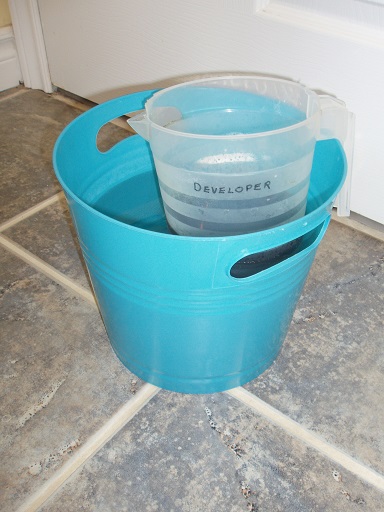 #1 Use the washes to gradually increase or decrease temperature.
#1 Use the washes to gradually increase or decrease temperature.
If the first dev is 24°C and the bleach is 41°C try to get your wash water somewhere in the low 30-degree range so that the film isn’t shocked into the high temperature. Do the same when cooling down the film to the fix temperature which is usually around 21°C.
#2 Use a warming bucket.
You should always prepare your chemistry before beginning but this means mixtures, like the reversal bleach, might cool down in the process. A "warming bucket" is a large bucket of hot water. To keep the bleach warm, place the bleach container in the “warming bucket” and cover it. I use this “warming bucket” later again in the process to keep the developer warm for the second dev.
Strawberry Tint Test
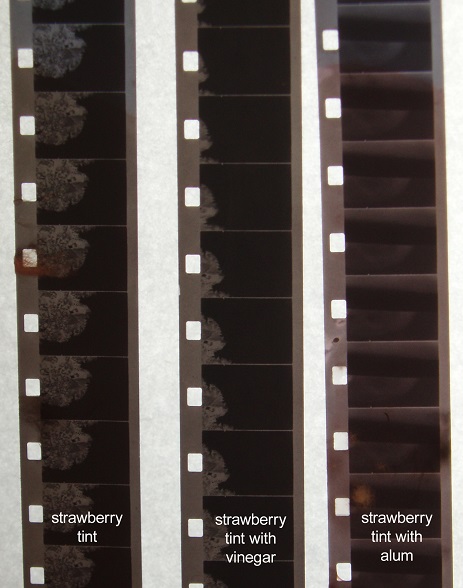 One of my goals is to develop more organic tints. I am interested in finding out what kind of colours I can generate front different plants. In the past I have tinted film with a stain or dye made from boiled down and strained plant material like dandelion, colt’s foot, and goldenrod. The tints still remain (after a year) but are a bit faded. This is the nature of organics, though I have heard they can be re-tinted.
One of my goals is to develop more organic tints. I am interested in finding out what kind of colours I can generate front different plants. In the past I have tinted film with a stain or dye made from boiled down and strained plant material like dandelion, colt’s foot, and goldenrod. The tints still remain (after a year) but are a bit faded. This is the nature of organics, though I have heard they can be re-tinted.
Tinting and toning are different processes. Tinting film involves soaking it in a dye which stains the film emulsion -this means that the light shining through the film is filtered through the dye, so that the white light shining through becomes the colour of the tint Toning the film involves a chemical process, where the silver particles in the emulsion are replaced with coloured, silver salts - this means that the darkest areas of the film will be coloured while other areas will remain untouched.
I prepared the strawberry tint in three different ways:
Tint #1 80ml of strawberry tint warmed to 33°C
Tint #2 60ml of strawberry tint with 20mL of vinegar
Tint #3 80ml of strawberry tint with 2 grams of alum
The reasoning behind the vinegar and alum was that perhaps these ingredients would bond the tint to the film better and is based on my knowledge of fabrics and yarns (not that yarn and film are related - but maybe that theory would work) and it was a place to start from. Alum and vinegar often act as mordant that fixes the dye to the fabric. Alum (potassium aluminum sulfate) can be found in the spice isle of the grocery store and is used in pickling (food preservation).
The last time I tinted with plants I soaked the film in an organic stain for 4 hours. This time it took much longer 74 hours. Alum seemed to offer the deepest tint. A good rinse took the stickiness off.
Tint #1 provided the optimum conditions for mold growth!
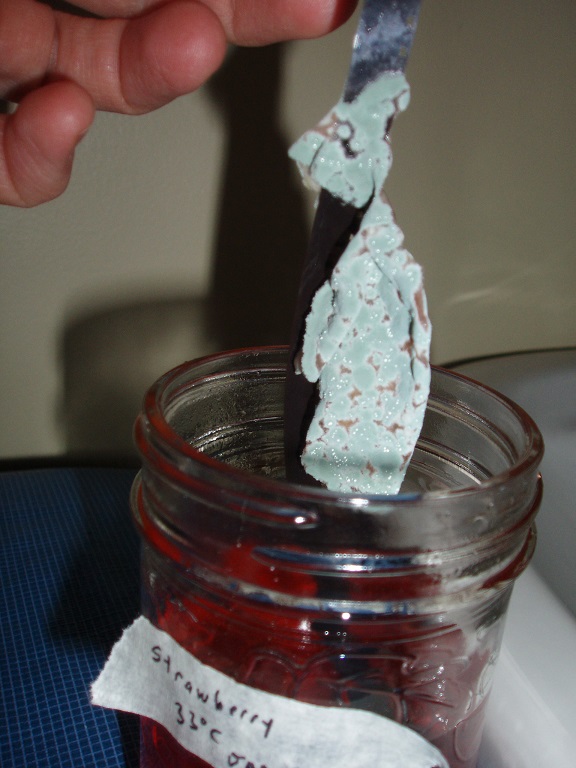
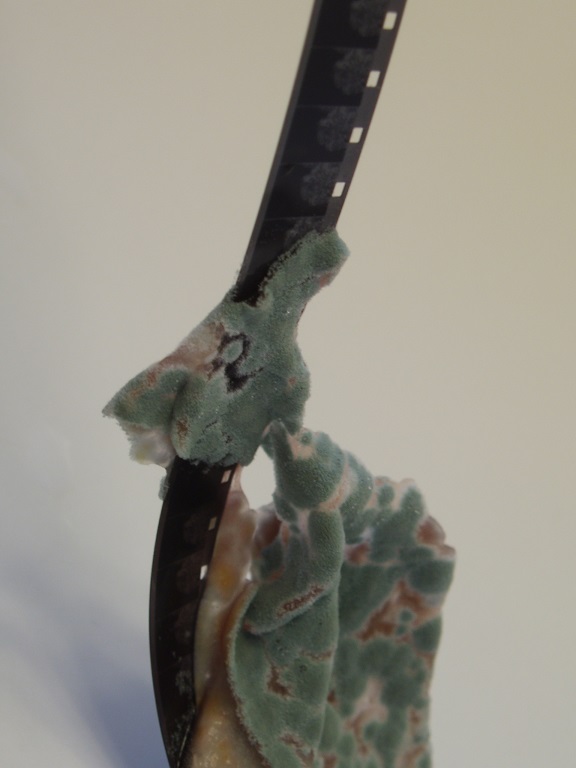
January 16, 2018
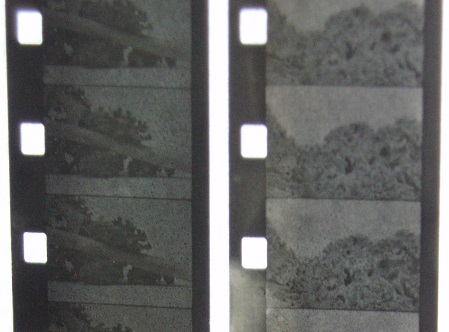 Today I tried an modified eco-reversal bleach recipe with the kale developer to see if I could get rid of the flecks.
Today I tried an modified eco-reversal bleach recipe with the kale developer to see if I could get rid of the flecks.
Modified Eco-Reversal Bleach #2
210 ml H2O2 (35% hydrogen peroxide)
720 ml H2O (water)
70 ml Vinegar (5% acidic acid)
At 41°C for 10 minutes
This made the "flecks" in the image smaller but they are still there.
January 19, 2018
The supermarket had some beautiful Ugli Fruit this week. So, I decided to test it out. This fruit was from Jamaica, when you think about how far the fruit has travelled, it isn’t a very eco-friendly option, but for folks in the tropics - this may be a good recipe for you!
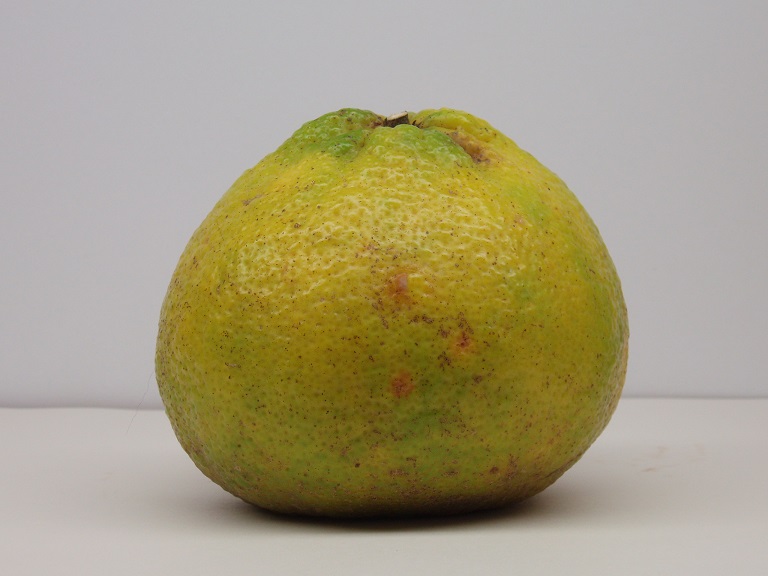
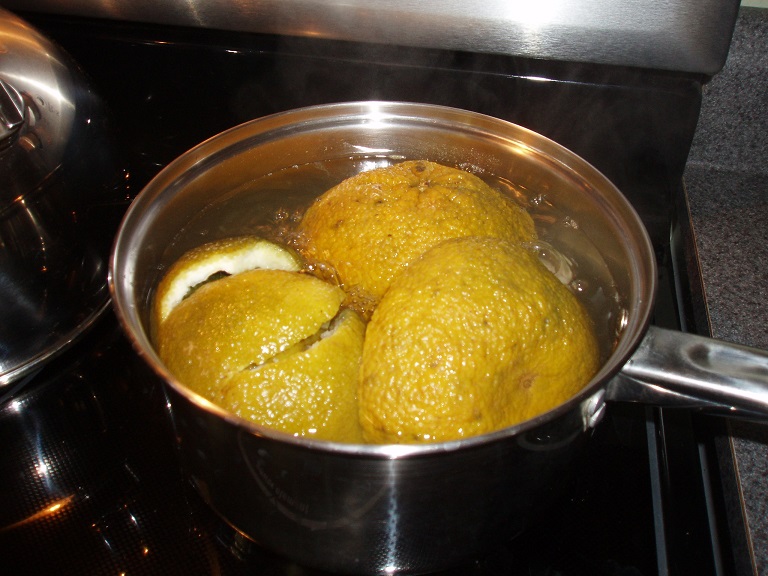
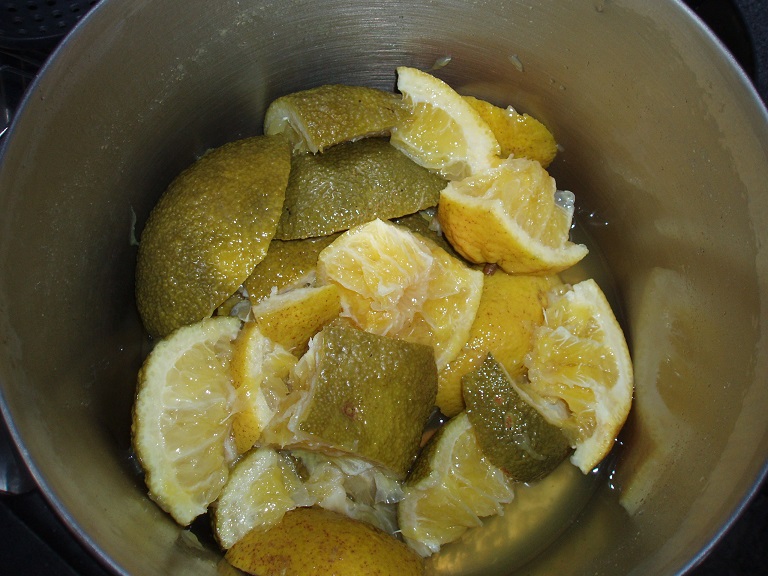

For Developer Test #1 I boiled down two Ugli Fruits in 4 Litres of water to get the tea and then based my first test on an orange recipe on Dagie’s site and developed for 15 minutes at 25°C. The film turned out thin.
For Developer Test #2, I used the same recipe but increased the time to 22 minutes at 27°C with better results.
Thinking I had a good developer recipe I tried it with the eco-reversal. The first and second developers were a little warmer by one and two degrees respectively. I also developed the second dev as long as the first dev, which was WAY too long. I should have stuck to my original guideline of developing for half the time of the first dev. (i.e. if first dev is 22 minutes second dev should be around 11 minutes) Also, eyeballing it helps.
Ugli Fruit Eco-Reversal #2 was worse, I had some extra Ugli tea left over so I used a bit of that mixed with a new batch, perhaps this was a mistake. The first dev was also cooler, and I developed it for less time, mistake two. Because of this when I exposed the film to the light, it wasn’t giving me that milky colour that should happen, the film was a hard white and wasn’t changing. I am not sure what I should do when this happens. But I know trying to expose it to light longer and not developing it for as long are not the answers. The second dev was a mere three minutes instead of ten or eleven minutes. Three minutes was much too short, this resulted in the very dark image on the right. A lot of these problems, could have been rectified, but lessons were learned. Listen to the previous results and listen to the film.
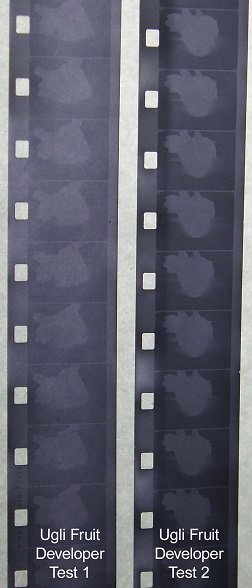
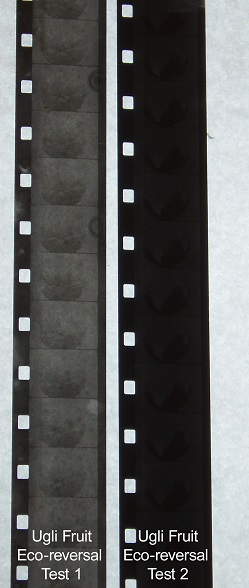
January 19, 2018
The BIG Tint
After the success of the strawberries and alum I decided to try some other tints. This is recipe for each tint:
80 ml of boiled down plant tea
2 g of alum
The film was checked every few hours as sometimes the emulsion gets saturated to the point where the emulsion slides off.
These tests took 72 hours.

...and these are the results!
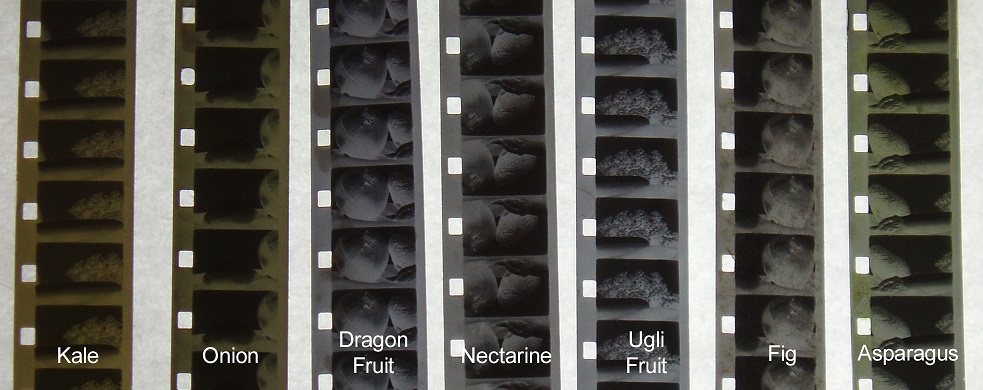
January 26, 2018
Eggplant
Sometimes the stars align, and you get it right the first time! This eggplant developer worked. The initial eggplant tea looked a bit like a week instant coffee, so I tried a modified caffenol recipe on it. I am very happy! Yu can see the all of the highlights and shadows in the film test.
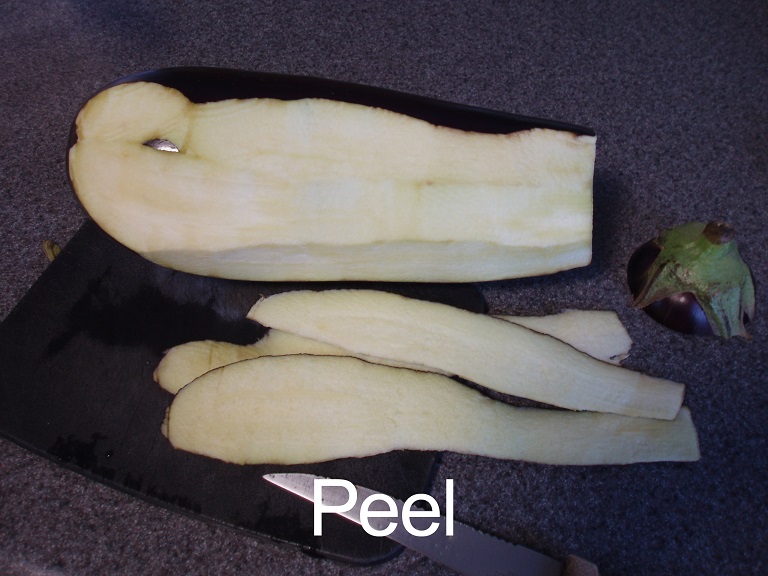
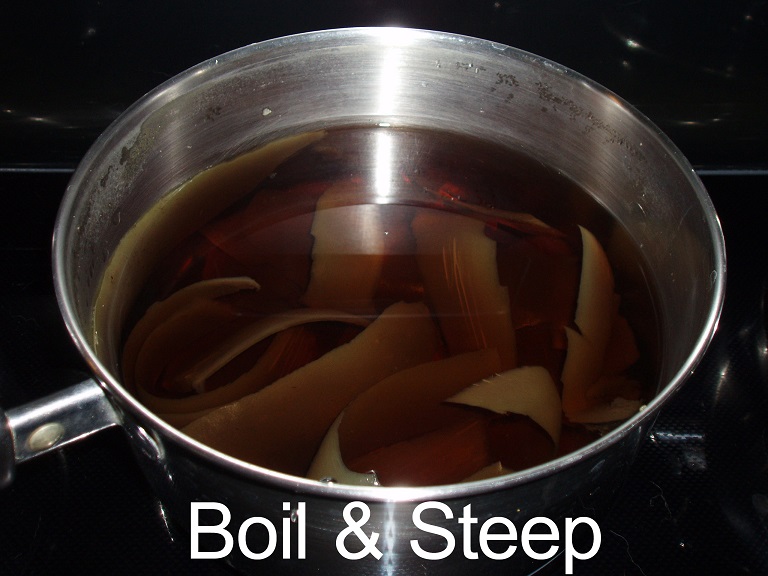
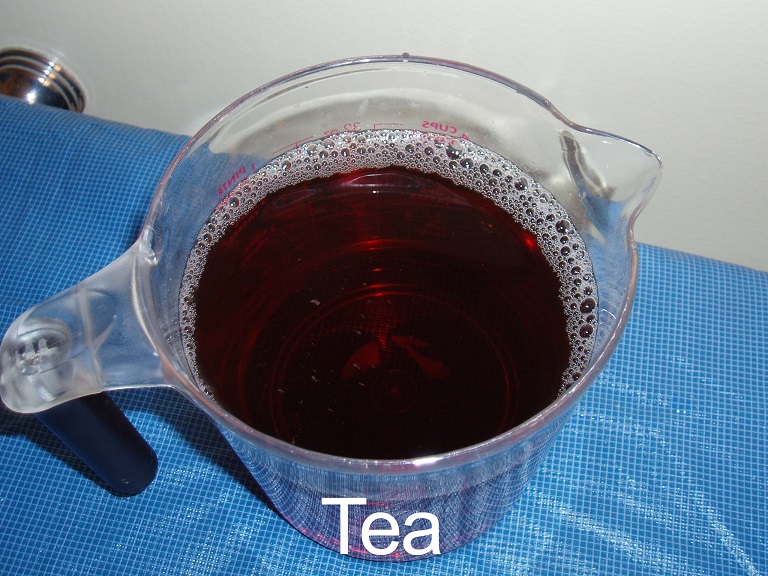
Eggplant Developer Test
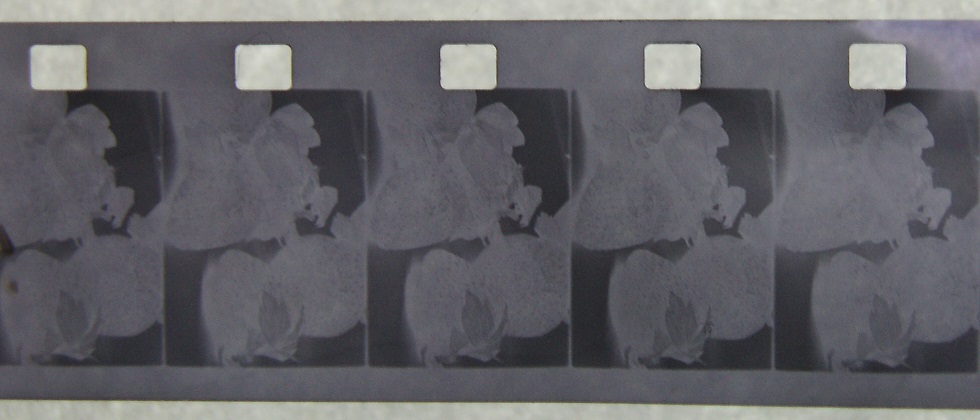
Eggplant Eco-Reversal Test #1
Not all “tea” is created equal, despite my best efforts to replicate the eggplant developer, I noticed that this batch of “eggplant tea” was weaker. But I think the main problem occurred during the second developer; I overheated it to 32°C for 8 minutes (it should have been around 24°C). This created a very dense image.
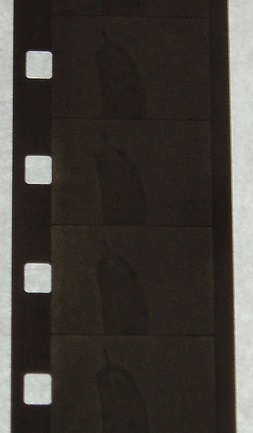
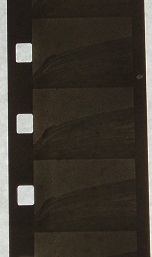
Eggplant Eco-Reversal Test #2
The second developer was still a little hot at 28°C but this time I also increased the second dev time to 11 minutes (instead of 8 minutes). I am trying to consider and compensate for temperature and time fluctuations as well as use my eyes to read what the film is telling me. What I should also do is think about all the tests results (not just the last test) before taking a course of action.
Having the film wound in the lomo tank (as opposed to a bucket) is a bit challenging as well, I think I am getting to precious about fishing the film out of the reel, I need to use a bit more force to yank out the end and see what is going on.
But another fun discovery has presented itself! It looks like there are stars dancing around the eggplant! I think this is another case of unstable eco-bleach, but I’ll take stars any day!!
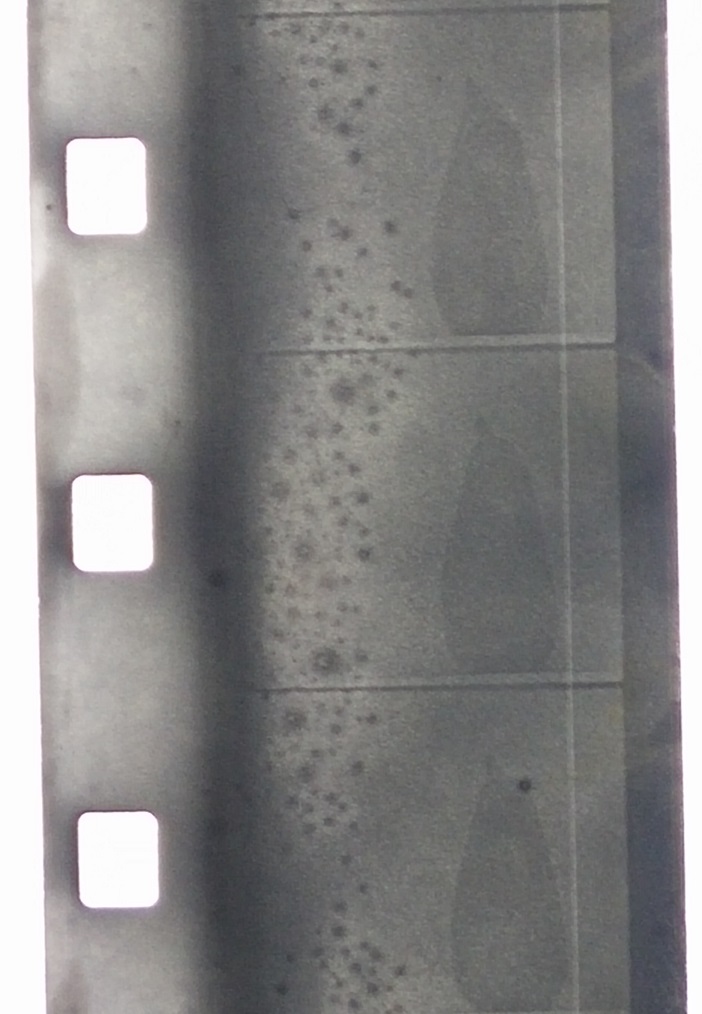
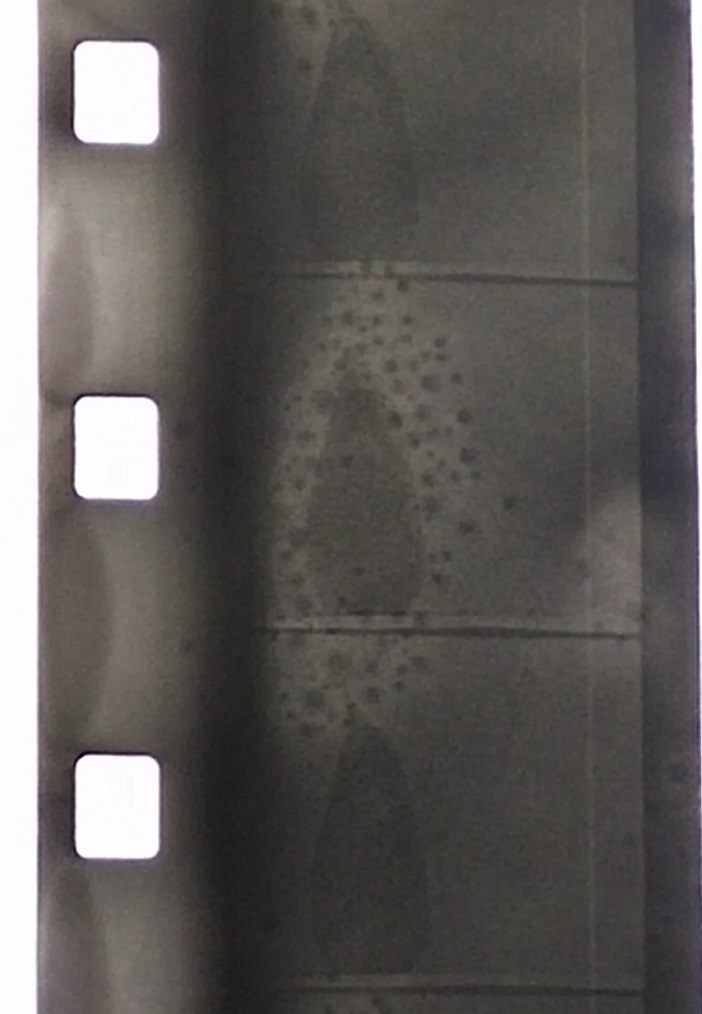
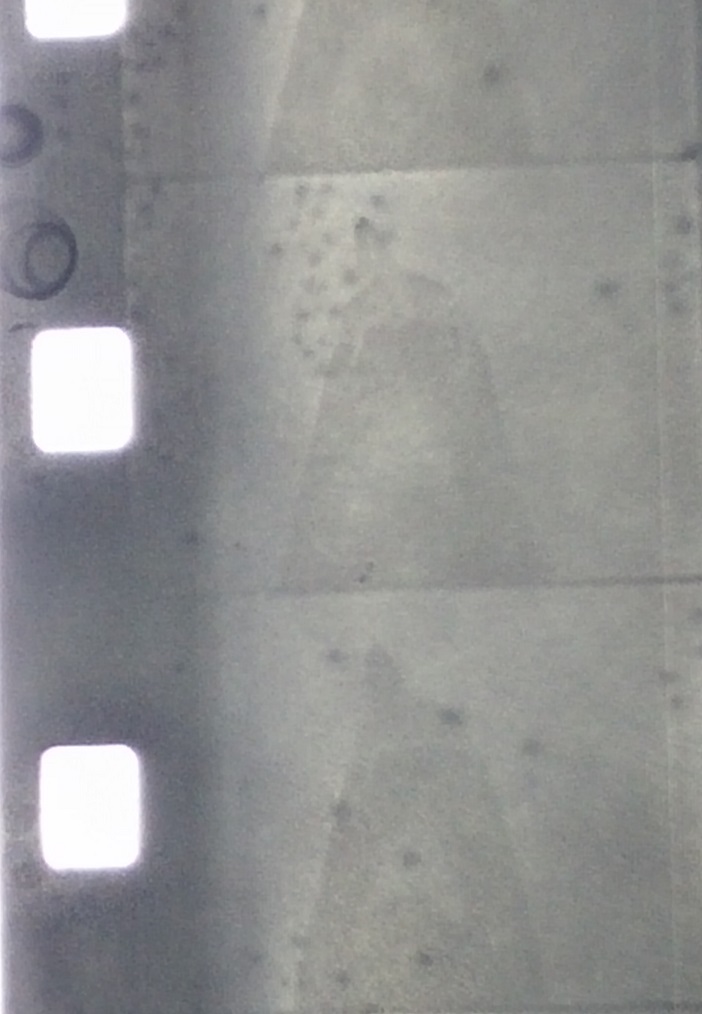
Tinting with Eggplant
When alum is added to eggplant it turns a beautiful mauve....but it is not a strong tint.
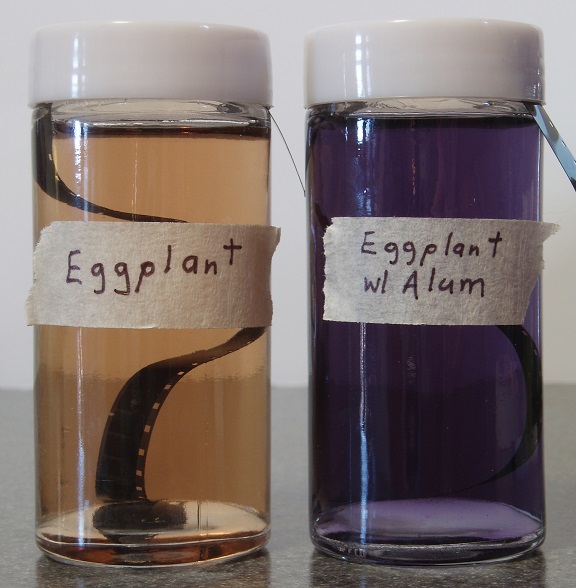
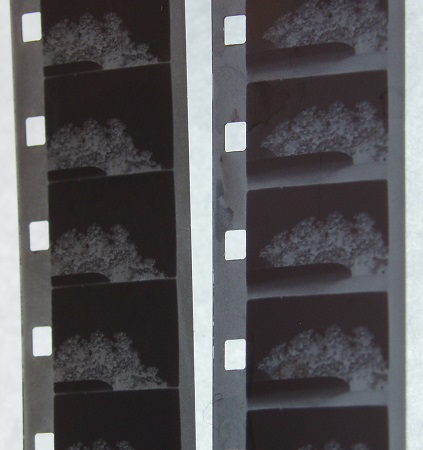
January 31, 2018
I am getting too comfortable in my work. Normally I air dry the lomo tank, but today I was rushing. To speed up the load I decided to dry the tank with a towel. The lid of the lomo tank fell on the upper reel, denting the plastic. Luckily the upper reel has not been compromised; I tested it out it still works but it has a dent now and I have to be extra careful with it. Lesson: slow deliberate movements...always.
